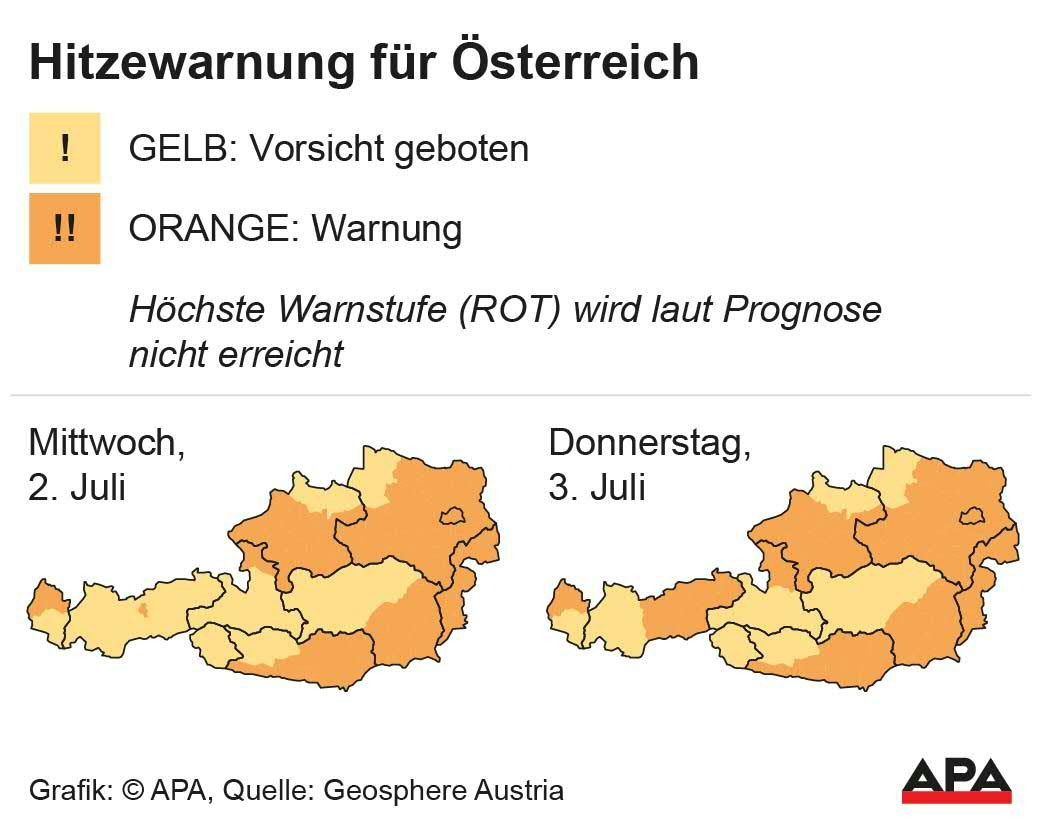Heatwave in Austria: What You Should Know

With hot days over 30 degrees, many hours of sunshine, and tropical nights, Austria is experiencing a heatwave. This can be particularly taxing on the human body. "No one should take the heat lightly and underestimate the dangers," warned Samaritan Association chief medical officer Michael Gruska in mid-June. Summer record temperatures - which are increasing due to the man-made climate crisis - pose health risks such as heatstroke or sunstroke.
Particularly at risk are older people or children, as they sweat less and have a harder time regulating heat, explained Wolfgang Schreiber, chief medical officer of the Austrian Red Cross. "In the worst case, a heat emergency can become life-threatening."
Tips: How to deal with heat properly?
In addition to sufficient fluid intake of two to three liters a day - suitable options include water, mineral water, or diluted juices, while alcoholic and caffeinated drinks should be avoided as they further strain the body - the Red Cross and the Samaritan Association recommend a light diet with plenty of fruits and vegetables. Sports or other very strenuous activities should be avoided during extreme temperatures or moved to the early morning and evening hours. To keep a cool head, it is generally important to minimize sun exposure, take breaks, and wear a hat and sunscreen. Cold compresses are also helpful for cooling down in between.

Pay attention to vulnerable people
During intense heat, it is especially important to pay attention to vulnerable people - particularly children, the chronically ill, the elderly, those at risk of poverty, or the homeless. If a heat emergency occurs - recognizable by symptoms such as a very red face, headache, nausea, elevated body temperature, dizziness, or chills - action is required. According to the Red Cross, affected individuals should be immediately moved to the shade and placed in a comfortable position with an elevated upper body. In case of circulatory problems, it is particularly important to elevate the legs. If the person's condition does not improve quickly, the emergency services should be called.
Many people do not have a cool retreat during extreme heat. An initiative by "Team Austria" from the Austrian Red Cross and Hitradio Ö3 lists all publicly accessible, cool indoor spaces across Austria on an interactive map. Anyone can add suitable locations to the map.
(APA/Red)
This article has been automatically translated, read the original article here.





